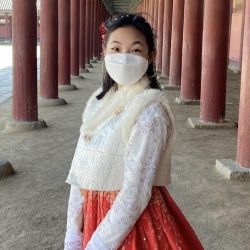Jeonju International Film Festival
Jeonju is one of those hidden gems that people don’t hear about until after they’ve left. Luckily there was a film festival going on and I heard about this area before I left Korea. This semester I decided to take a film course to really dive deeper into Korean culture and in that course, my professor talked about a film festival that was happening in Jeonju. Another friend and I who were in that same film class decided to go together and book a place in the heart of the area. We later found out that the village was the largest traditional Hanok village in South Korea. It has over 730 traditional Hanok houses and the sight is definitely something everyone must-see in Korea. The city radiated traditional culture and was foreigner-friendly. The area I stayed in was Wansan-gu, Jeonju in a traditional Hanok house I found on Airbnb.
The Film Festival Experience:
The experience itself was pretty amazing. The film festival was from April 28th until May 7th. It was my first time going to a film festival and every day they showed a different film so booking films we wanted to see was a bit tricky since some films were only shown in the beginning and others every other day or every three days. My friend and I stayed from May 2 until May 4. We spent the majority of our time either doing class online or watching movies. The films and documentaries we watched showed Korean culture from an unfiltered perspective including the shame and pressure they experience with scandals, national testing, and other social topics. The film festival didn’t just show Korean works but my friend and I decided to mainly stay with Korean works to immerse ourselves in the culture.
Hanbok Culture and Food in Jeonju Village:
I went back to the village a few days later to experience the village and hanbok culture. When I went, everyone, both natives and foreigners, were wearing hanboks all day long. It was incredibly normalized to do so and the Hanboks were unlike anything I’ve seen in Seoul. The colors ranged from pastels, flowery patterns, ombre, deep to light colors, gold embroidery, and even layered hanboks. The diversity of the hanboks was enough to convince me to go back but there was an area with amazing cafes and an unbeatable view of the sunset. The food itself was pretty amazing. The main street where all the hanbok rentals and stores are had amazing traditional food. I was told Jeonju was famous for its bibimbap and bulgogi. Another area had a traditional garden where people could visit a small traditional village. Jeonju was truly amazing and there was too much to do in the short amount of time that I was there.
The more you look into that province the more beautiful nature activities you will find. I think the fall or spring would be the best time to visit since the flowers will still be alive. If you are looking to travel outside Seoul that’s unique and rich in culture, I highly recommend Jeonju!
Related Posts

Soul Searching in Seoul: Everything I Learned and What I Wish I Knew
Before I start crafting my “study abroad changed me” answers for friends and family, here are the practical things I wish I’d known. The things that would’ve saved me time... keep reading

A Seoul Escape to Bukhansan
Get out of the hustle and bustle of Seoul and head to the peak of Bukhansan!

My Time in South Korea Attending Yonsei University: A Life-Changing Chapter
By: Zahrraa Al-Salman Studying abroad had always been a dream of mine—an opportunity to step outside of my comfort zone, immerse myself in a new culture, and deepen my understanding... keep reading










